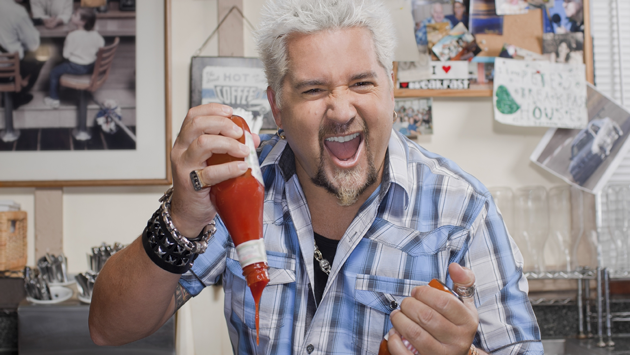How Premiere Pro and Its Creative Cloud Companion Apps Drive Workflow for Citizen Pictures
Denver's Citizen Pictures got a boost in 2011, when Food Network tapped it as the new production company for its popular show Diners, Drive-Ins and Dives, hosted by Guy Fieri [pictured, top of page]. Citizen had been working with Food Network already, on shows like Giada at Home, but Triple D, as it's often affectionately abbreviated, was a prize catch. We talked to Citizen Post Production Supervisor Andrew Moraski about how the company's workflow has evolved to keep up with its fast-paced workload.
Leaving Tape Behind
Diners, Drive-Ins and Dives inspired two big steps in Citizen's technical evolution. For one, the company switched its workhorse camera from the Panasonic AJ-HDX900, which recorded to DVCPRO HD tape, to Sony's FS7, Moraski tells StudioDaily. A "sprinkling" of Canon 5D and C300 footage is also in the mix. For another, the company has moved the show's editorial from Final Cut Pro 7 to Adobe Premiere Pro CC, a transition that was completed about 18 months ago.
"We have 26 edit bays, and every one is loaded with Creative Cloud," Moraski said. The users are mostly writers and editors working in Premiere Pro, but the in-house graphics team makes use of some other CC applications.
Media Management
Media management is a challenge for any reality TV show, but Moraski says the Citizen Pictures team does it all right inside Premiere, using the "Log Note" field in the capture panel to identify material that needs to be kept online for later reuse. The procedures are simple enough to be "assistant editor-agnostic," Moraski says. Citizen also makes good use of MediaSilo's Edit Companion, which is built into the NLE using Premiere's panel-integration capabilities.
As versatile as Adobe's tookit is, Moraski says it's important to encourage creative growth by adapting workflow to incorporate the tools that users are most comfortable with. Thus, color-grading takes place in DaVinci Resolve rather than Adobe's own SpeedGrade and audio sweetening happens in Avid Pro Tools instead of Audition.
Feature Presentation
Asked about some of his favorite Premiere Pro features, Moraski cites the multicam editing capabilities, as well as how easy it is to slip clips left and right on the timeline. Native codec support is not usually essential, he says, as the vast majority of the footage is converted to ProRes before the edit. But the ability to drag-and-drop any old piece of footage onto the timeline comes in handy when it comes in at the last minute, especially if it's from a B camera with an oddball file format.
Plug It In
Two of Citizen's workhorse plug-ins for video effects are Video Copilot Twitch for After Effects, which allows multiple types of "glitch" effects to be applied to a single clip for a unique effect, and RE:Vision Effects Twixtor, which can be used to make shots run in extra-slow slow-motion. "Speed ramps are big," he says, especially for skiing videos and any other kinds of sports footage. Adjustment layers are another no-brainer. "We shoot everything flat, then throw a LUT on top of an adjustment layer, and it looks good," Moraski explains.
Make It Yours
He urges editors not to overlook some of Premiere's more prosaic customization options, like customized keyboards, which he says can really flatten the learning curve and raise confidence levels for editors coming over from Avid Media Composer or Final Cut. He also likes the ability to create and easily switch between multiple work areas. The team on Destination America's competitive barbecue series Smoked shoots so much footage — with six cameras shooting full-time over 10-hour barbecue days, the show generates about 10 TB of data per episode, Moraski says — that it's a big help to be able to switch screen layouts from "editing" mode to "find footage" mode and "assemble" mode. What's more, those settings can be sync'd in the cloud so that individual editors can access their own customized work areas from any workstation they might end up seated at.
How is all that footage stored? Citizen Pictures has about 350 TB of capacity on a brand-new fibre-connected Quantum Xcellis SAN that it switched to in January, retiring an old Xsan/Xserve set-up. "It's awesome," Moraski says. To us, it sounds like a tasty recipe for reality TV.
Citizen Pictures: www.citizenpictures.com
Photo courtesy Food Network
Crafts: Editing Post/Finishing Shooting
Sections: Technology
Topics: adobe citizen pictures creative cloud fs7 premiere pro Quantum Sony xcellis
Did you enjoy this article? Sign up to receive the StudioDaily Fix eletter containing the latest stories, including news, videos, interviews, reviews and more.











Leave a Reply